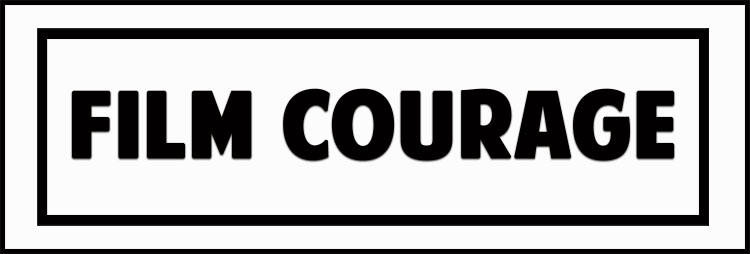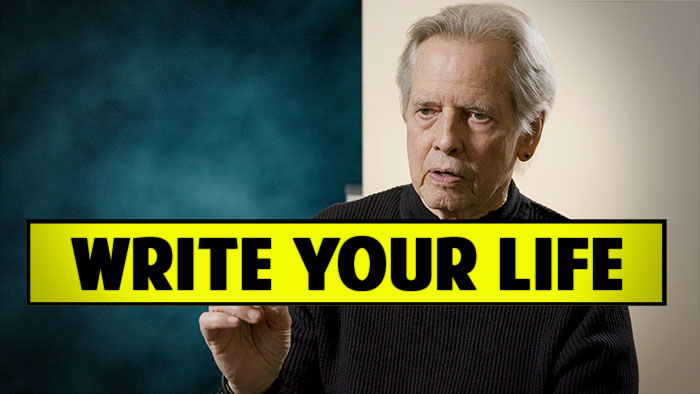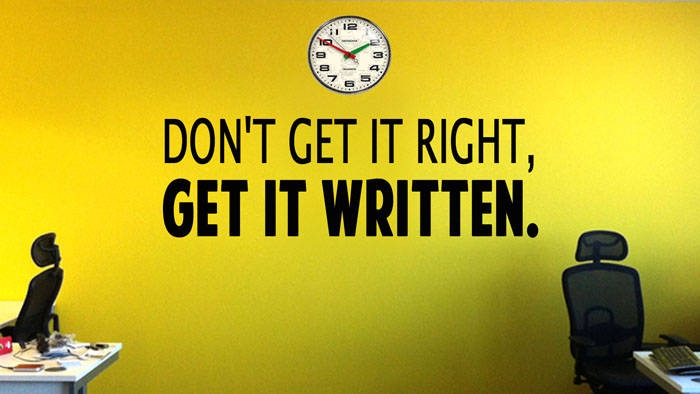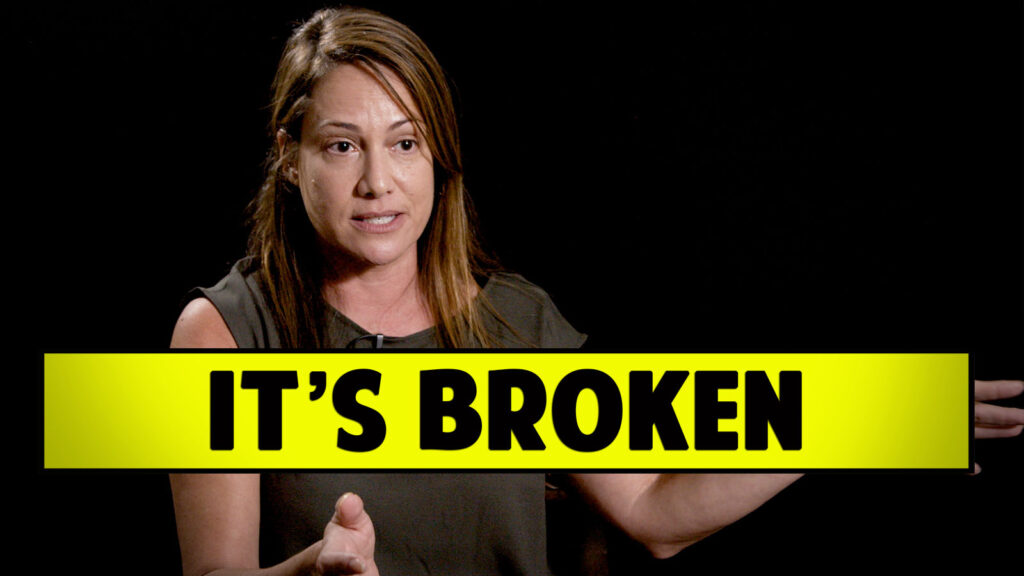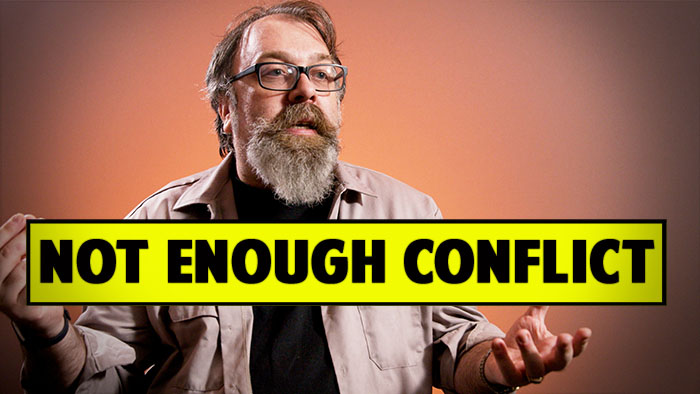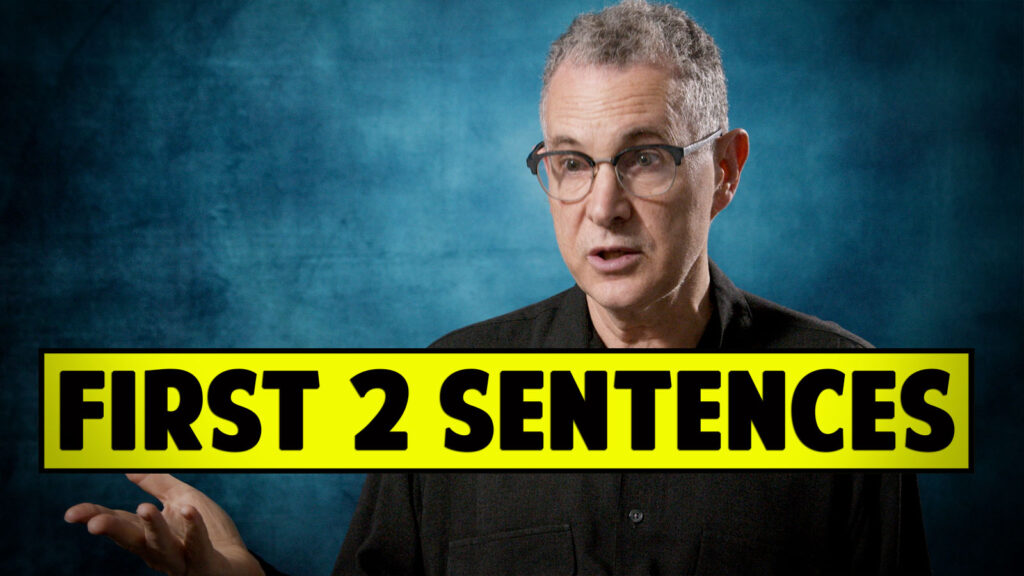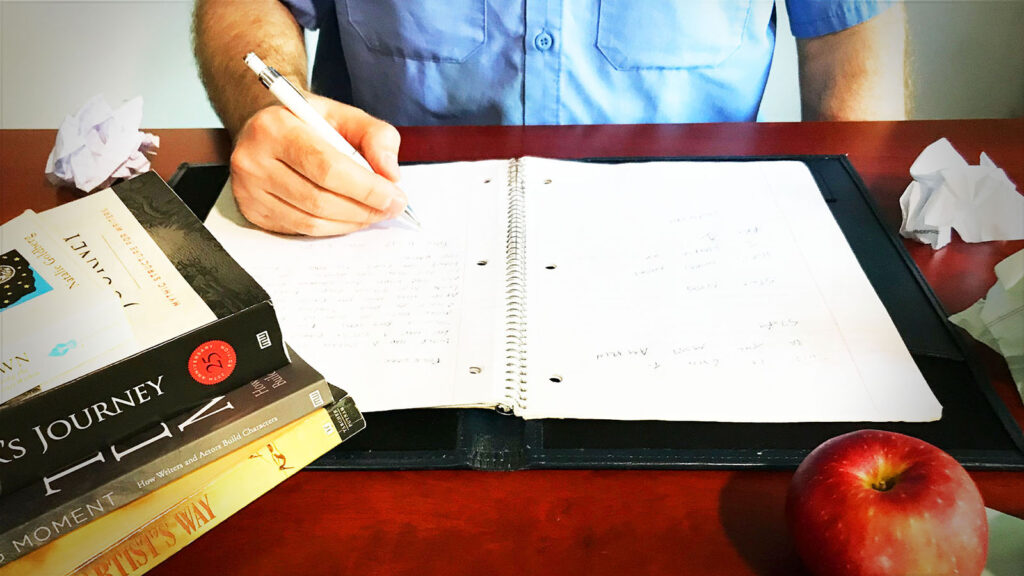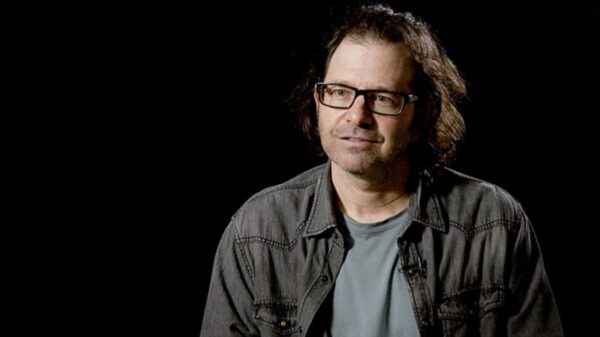
MARK MARSHALL – FILMMAKER/PRODUCER
.
FC: What was life like growing up in Oklahoma ? Did you know from the beginning you would travel to LA for film/television or did you have other plans? Did you serve in the US military?
MM: It was a paradise. I attended three fantastic schools with many of the same friends all the way through. I didn’t watch a lot of television, so I had wonderful opportunities to exercise my imagination. I really thought I would spend my life in my hometown like George Bailey did. Each year in May, Enid held a nationally-recognized music festival called Tri-State. In its heyday, over 10,000 band and chorus kids would come from all over the country to be judged by professional musicians and composers. In fact, Jesse Lasky Jr. produced a 28-minute film in 1955 for theaters called “Holiday for Bands,” narrated by Jimmy Stewart (you can find it on You Tube). That music festival had such an impact on me that I was sure that I would have some sort of career in music. I ended up getting a voice scholarship to a local university. However, the seeds of a film career were planted in the 9th grade and by the end of my first year in college, I knew it would be film over music. L.A. was a certainty after my summer there in 1977.
I didn’t serve in the military. The Vietnam War ended before I came of age, and seeing the reception our soldiers received when they returned home doused any ambition I might have had to enlist.
FC: What was the first movie you saw in the theater and your impression?
MM: The first movie I ever saw was the 1966 re-issue of “Bambi” at the Esquire Theater in Enid, Oklahoma I went by myself (you could do that in a small town in those days). The biggest impression the movie left on me was that I didn’t leave my Mom’s side for three weeks! My second impression was wonder at how something could make me thrilled, anxious, sad and awed, all in the span of 70 minutes!
FC: How did you begin you film career?
MM: I met producer Howard Kazanjian while attending the USC/Universal Studios program in the summer of 1977. George Lucas had just signed Howard to produce the sequel to “American Graffiti.” I kept in touch with Howard after the program was over and after being respectfully persistent for about a year, he offered me a job as a film runner on the picture.

Mark Marshall and Jim Michaels on the set of Air-Wolf
MM: The only Lucasfilm set I spent any time on was the Hoth Rebel Base set for “The Empire Strikes Back” at Elstree Studios in London in 1979. I was there to assist publicist Craig Miller in conducting cast & crew interviews. I thought I had died and gone to Walt Disney’s Fantasyland! Of course, I was a big fan of the first movie, so I was more than a little overwhelmed, but I remember Mark Hamill and his wife inviting Craig and I over for a barbeque at their flat. From that point on, I felt like one of the crew.
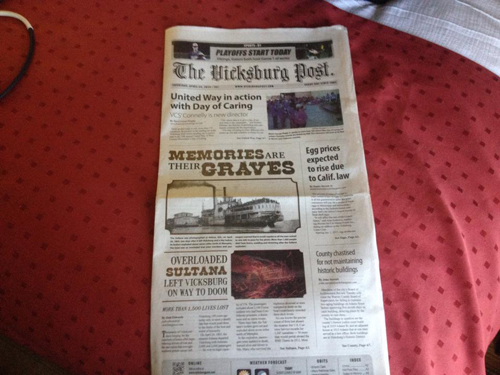
FC: What happened in the early morning hours if April 27, 1865?
MM: On the Mississippi River, seven miles north of Memphis, Tennessee, the boilers of the side wheel steamboat Sultana suddenly exploded at 2 a.m. on April 27, 1865. The Sultana was carrying more than 2,000 Union prisoners of war recently released from the notorious prison pens of the South. The sick and emaciated soldiers suddenly found themselves caught between the raging flames of the boat and the icy floodwaters of the Mississippi. Their chances of survival were slim.
The burning and sinking of the Sultana, the worst maritime disaster in the history of the United States, claimed more than 1,700 lives.
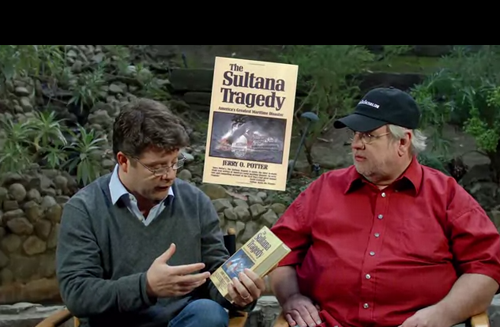
Sean Astin and Mark Marshall explain more about the Sultana Disaster
MM: I heard about it from my brother, Mike. He had stopped at Andersonville National Historic Site while doing research on a different subject and was browsing through the gift shop in their visitor center. He picked up a copy of a book that mentioned the Sultana in relation to another Union prison camp at Cahaba, Alabama and began reading. He had never heard of the Sultana and couldn’t believe the incredibly tragic nature of the story. Upon arriving home, he emailed me in London, where I was supervising post-production on “Harry Potter and the Sorcerer’s Stone.” Mike presented the story to me, in the hopes our small production company might investigate the possibility of creating a documentary video on the subject.
FC: Why is the Sultana Disaster important to you? Did you have relatives from years prior involved?
MM: Any story of this magnitude that has been overlooked and largely forgotten is of interest. Our production company was founded with the goal of telling stories exactly like that of the Sultana. It’s important to afford historic events, along with their impact on the lives of those involved, their rightful and deserved place in our nation’s history. Our goal is to remember the Sultana, to tell the story of the disaster, and to honor the lives of all affected by this awful American tragedy.
As far as I know, our family has no ancestors who were involved in the Sultana disaster nor do we have relatives who had ever researched the subject.
FC: Why do so few people (2 percent of the U.S. population) know about the Sultana? How did the media of that time present the story?
MM: Events that occurred about the same time overshadowed the Sultana tragedy. President Lincoln had been assassinated and his funeral train was making its way across the country. The search was on for his killer. Our country had endured four years of sustained killing and was tired of hearing about death. It was, if you will, a “perfect storm” of events collaborating to force the news about the Sultana disaster off the front pages of the newspapers and into the backwaters of the typical American’s mind.
The media of the day covered the story but relegated it to brief accounts in the back pages of their editions. East Coast newspapers largely ignored the news of the disaster because few of the soldiers were from units east of the Ohio River. With the exception of the Midwest papers, an area of the country claiming most of the prisoners who were on board, papers sans news about the Sultana were the norm within a week of the tragedy.
FC: How do you plan to tell this documentary film? Will you use re-enactments? How did you find the historians involved?
MM: The script for the documentary is still in the formative stages. As of now, re-enactments, if used, will be kept to a minimum. The primary historians regarding the Sultana are Jerry Potter, who wrote the book The Sultana Tragedy: America’s Greatest Maritime Disaster in 1992 and Gene Salecker, author of Disaster on the Mississippi: The Sultana Explosion, April 27, 1865, who wrote his book in 1996. Since their books appeared, several other authors have come forward with their works on the subject. Also, Gene, Jerry, and another historian, Louis Intres, are members of the Association of Sultana Descendants and Friends, a group that holds an annual reunion honoring the memories of those who were aboard the Sultana. Many of the descendants have done extensive research concerning the histories of their ancestors and have been valuable sources of information for our documentary.

FC: How much time have you research the Sultana disaster? Did you visit the incident site?
MM: My brother and I began researching the story of the Sultana in late 2001 and early 2002 and have been working on the documentary off and on since then. Last year, our company teamed with Jeff Hoopingarner, owner of a local production company and good friend, to renew our documentary efforts. As with any of us who want to know everything possible about the disaster, we don’t keep track of the actual number of hours involved in our research.
We have been privileged to visit many of the sites relevant to the story of the Sultana, including the location of what little remains of the actual boat. That site was discovered by Jerry Potter while doing research for his book. Everything valuable from the Sultana was salvaged, primarily by government investigators, not long after the explosion. The boat burned almost to the waterline and, over the years, the remains were gradually silted over as the Mississippi River changed course.
FC: Is this the first documentary film you’ve been a part of? Which other documentarians do you admire?
MM: Yes it is, but I’ve always been a fan of documentaries, both social and historical. I love all of Ken Burns’s work, especially “The Civil War” and his World War II documentary series, “The War.” I was also very moved by the documentaries, “Paper Clips” and, more recently, “Blackfish.” I still get choked up when I try to describe “Paper Clips” to someone.
FC: You are seeking to raise $75,000 on Kickstarter? Can you tell us how you determined this amount and what the breakdown of costs will be?
MM: We still have some interviews and B roll left to shoot, so we will have some equipment costs, and we will need to hire a few locals in the areas where we are going to shoot. There are also a few permits we will need to acquire. But the bulk of the funding will go to post-production expenses: sound, music, voiceover recording time and at least one CGI money shot to bring the explosion on the Sultana to life. The rest of the expenses are for marketing – EPK, festival fees, etc. We consciously kept the costs to a minimum and directed our dollars to the most critical areas. $75,000 was the figure we settled on.
FC: Why are you turning to crowdfunding to make the Sultana?
MM: I think that people like to be involved and share ownership for something they believe in, whether it be a film, an invention or a book. Crowdfunding sites like Kickstarter make backing a project fun and easy. It becomes a win-win for everyone. It’s really no different than pledging to your local PBS station. Backers know that they become a part of something special. Also, I think when the artists are beholden to the people who have backed them, it keeps the artist honest and helps drive the artist, beyond their own desires, to produce the best product possible.
FC: What are your plans once the documentary is finished?
MM: It is our hope that one of the cable channels such as History Channel or National Geographic will pick it up for airing. We hope it will have an afterlife in some of the streaming outlets. We would also like to get the documentary into every high school in the U.S. so that the next generations of young people will have an opportunity to learn about the disaster. Finally, we plan to premiere the documentary in Memphis next April on the 150th anniversary of the disaster.
FC: Who will be your D.P. What will you shoot with?
MM: Our director, Jeff Hoopingarner, likes to shoot with a Canon C300 on a tripod or a slider. His friend, Mark Ray, assists during the shoot. We supplement with locals when needed.
FC: How did you meet Sean Astin and Jim Michaels?
MM: I was serving as Steven Spielberg’s personal assistant during pre-production of “The Goonies” in late summer of 1984. Sean was 13, I think, when he came to audition for the film at Amblin on the Universal lot. I was running the video camera during the casting sessions, and I went out to the lobby to bring Sean back to meet Steven, director Richard Donner and casting director Mike Fenton. I was trying to calm Sean’s nerves, but ended up making him even more nervous. To this day, he thinks he flubbed the audition, but he charmed Steven, Dick and Mike and won the part.
I met Jim in early 1984. His roommate at the time was dating my sister, and they introduced us. I had just started at Amblin and Jim was working on the lot doing computer playback and technical advising for Universal TV series such as “Whiz Kids” and “Airwolf.” We had the same ambitions and just hit it off. He taught me about television production and women, and I taught him absolutely nothing!

FC: How did you assemble the others in your amazing team?
MM: If you are speaking about the documentary team, My brother, Mike, and I met a very talented videographer, Jeff Hoopingarner, last year. We saw a piece he had done for the Western Heritage Museum in Oklahoma City and were very impressed. We also discovered he had been shooting videos for the FAA for several years. He was very seasoned and very creative. Fortunately for us, Jeff became fascinated with the story of the Sultana, and we asked him to direct the documentary. He spent his own money to travel to the 2013 Sultana Reunion at Andersonville, Georgia and also to Memphis to shoot interviews for the Kickstarter campaign. Mark Ray, a long-time friend of Jeff’s, went with him to assist. We have recently added a third Executive Producer, Matthew Egan, to help guide us through the world of crowdfunding and beyond.
If you are speaking of the Kickstarter team, all I can say is that we have been equally blessed. In March, Sean Astin introduced me to a woman who joined Sean’s KS campaign last year to raise money for the 2nd season of his internet radio show, Vox Populi. By the second week of the campaign, Sean had reached his $30,000 goal. Leah Cevoli and her amazing team, including graphic designer Gina Alessi, came aboard in the final week. In seven days, they doubled Sean’s total. Sean was intimately involved, so it was a true team effort, but I realized that I had to have them on the Sultana project, because crowdfunding is relatively new to me and, as Dirty Harry said, “A man’s got to know his limitations.”
FC: Had the Sultana disaster happened in 2014, how do you envision things might have happened differently/been reported?
MM: A disaster like that of the Sultana would most likely not have happened nowadays. Safety protocols (some of which were a direct or delayed result of the Sultana disaster) would have prevented the mechanical problems that led to the explosion. Greed and corruption, the true underlying causes of the tragedy, might still have to be dealt with. Reporting of the event would certainly be different due to the 24-hour cable news outlets, online news sites and social media.
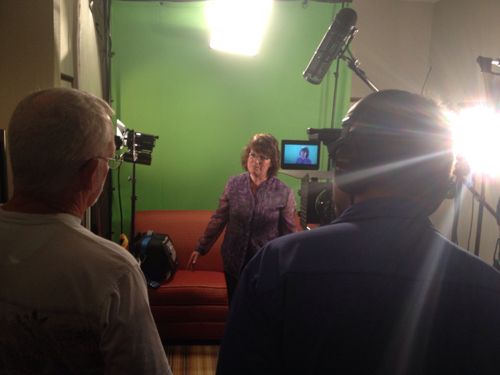
FC: What is the Sultana Association of Descendants and Friends?
MM: The Association of Sultana Descendants and Friends was formed in 1988, as a result of the efforts of Norman Shaw of Knoxville, Tennessee. This organization renewed the tradition of the Sultana survivors who held an annual reunion for the purpose of honoring the memories of those who perished in the disaster. An additional purpose of the original gatherings was for the remaining survivors to support one another in their efforts to secure from the government a pension for themselves as well as the families of those who died in the tragedy and to urge the government to acknowledge the disaster and possibly erect some kind of national monument in recognition of this historical event.
The Association recently held its 27th annual reunion in Vicksburg, Mississippi where the soldiers would have boarded the Sultana on their trip home. Next year, the reunion honoring the 150th anniversary of the event will be held in Marion, Arkansas (the Sultana’s final resting place) and Memphis, Tennessee (just across the Mississippi River near where the disaster occurred).
FC: What will this film teach us about accountability?
MM: Accountability should have been the responsibility of the United States government, the agency responsible to a great degree for virtually murdering her own sons and daughters. Union officers made the decisions which, when combined, sealed the fates of all those aboard the Sultana on that dreadful early morning of April 27, 1865. Numerous people within the ranks could have stopped the overloading of the boat, could have demanded a more thorough repair of the faulty boiler, could have turned deaf ears and blind eyes to the bribes that were offered, could have placed many of the soldiers and civilians on other boats waiting at the Vicksburg waterfront, and could have drastically lessened the possibility of the disaster occurring. For whatever reason, none stepped forward to accept the responsibility necessary to prevent what eventually happened.
FC: When the public collectively experiences a major tragedy via the news and social media, how does this change us? Do you think society becomes more empathetic or more apt to turn a cold shoulder because we feel powerless?
MM: Citizens in 1865 had to deal directly with horrors that we are screened from, by and large, in today’s society. If anything, we might feel more empowered to confront and cope with tragedy today simply because we have vastly superior resources and a much more rapid and thorough way of handling such situations. The only constant is the fact that tragedy of any kind does change us, hopefully for the better as we draw on the strength and compassion of those who are kind and sensitive enough to offer their help.
FC: What are your observations from the transition of film to digital filmmaking?
MM: I think it was very similar to the transition from silent to sound in the late 1920’s – utter chaos initially. I have a very romantic view of the way films were made in the 70s, 80s and 90s. Everything was sprockets-based and films were edited on Moviolas, KEMS or Steenbecks. You carried separate picture and track, weighing up to 100lbs to theaters for audience previews, built the picture and track and prayed that neither would break during the screening. Negative was cut by hand, and the picture was timed photo-chemically. It’s all we knew. When it became clear that digital filmmaking was the future, I witnessed a lot of resistance. One editor retired rather than learn to use an Avid. Any artist who worked with film liked the feel of celluloid, could feel the rhythm of the film going through the Moviola. It was tangible. Digital filmmaking, at least at the post-production level, feels one step removed. Having said all that, I don’t know of any editor today, except perhaps Michael Kahn, who misses trim bins or trying to cut one frame back into a workprint!
FC: How do you feel about the democratization of filmmaking? With everyone able to shoot, edit and distribute their own films, does it water down creative content or lend ability to artists of every social class/level?
MM: I think it is a best of times/worst of times scenario. People of every social level have something to say and now they have the tools to say it, whether it’s an iPhone or an Alexa. Ultimately, audiences just want to be told a good story; they will separate the wheat from the chaff.
FC: Did you learn more about life or filmmaking from Steven Spielberg over the years (can you elaborate)?
MM: Definitely some of both! On life, I learned to always anticipate and be prepared for anything and everything. I learned the hard way, too – no matter how well prepared I was to discuss an issue with Steven, he always asked a question I hadn’t anticipated. Fortunately, he was very patient with me, although I probably wore that patience thin from time to time. As for filmmaking, I was on the set with him through “Goonies”, “The Color Purple” and two “Amazing Stories episodes, so I was privileged to watch and listen to him work with his cast and crew. He always knew his first shot in the morning, his first shot after lunch and all shots in between and after. The crew appreciated his decisiveness. If he ever changed his mind about a shot, it was always in service of something better. Also, Steven loves scoring, so I particularly enjoyed being with him at the sessions and see him work with John Williams or Quincy Jones (“Color Purple”).
FC: Can you recount one of the most gratifying experiences on set from your entire career (a stand-out moment from any shoot that left you with a powerful memory)?
MM: There is a scene in “The Color Purple” where Mister (Danny Glover) is physically throwing his sister-in-law, Nettie (Akosua Busia), off his property for rebuffing his sexual advances. Nettie and her sister, Celie (Desreta Jackson playing Celie as a young woman), are holding onto one another for dear life. Mister literally drags Nettie away from Celie, hurls her out onto a country road and throws rocks at her. Steven set up the master shot and rehearsed it once or twice with the actors and the crew. He rolled cameras and everyone did their job. When Steven called cut, I looked around and I saw the drivers, Teamsters, with tears coursing down their faces. Everyone was affected by that scene. To this day, I get a little choked up when I remember it. (Of course, watching the Quidditch game being shot in HP1 was pretty memorable, too!)
FC: When you go to the movies, while sitting in the dark with fellow movie lovers (yet total strangers), what makes you lose yourself in someone’s creative vision?
MM: If I care about the protagonist, if I can identify with his/her needs or desires, then I will follow them wherever their journey takes them, even if it strains believability (“Field of Dreams” for instance). I think that’s the common element that brings total strangers together.
FC: What are your thoughts on creative collaborations (why they work or fall apart)?
MM: I personally love the idea of collaboration. I recognize my own creative weaknesses, so I enjoy working with someone who is strong in those areas where I am weak. I think it’s need that brings creative people together and, its ego that ultimately drives them apart, putting one’s own desires first. A marriage is not 50/50, it is 90/10 — 90 on your part and 10 on your spouse’s part, and 90 on your spouse’s part and 10 on your part.
FC: What can you tell a production assistant who is just getting started?
MM: It’s the same advice that I was given when first started in the business: love what you do and love it every minute because at least three times a day, you are going to ask yourself why you’re in this business! Also, treat everyone below you with courtesy and respect because they might be in a position to hire you one day.
FC: What can you advise an individual acting as an assistant someone else?
MM: Always display a positive attitude, be proactive – don’t wait around until you are told to do something – and anticipate your employer’s needs.
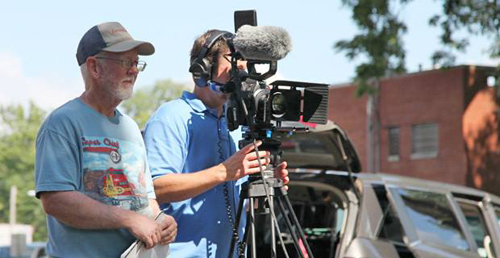
FC: As an LA transplant yourself, what have you witnessed in those new arrivals eager to get their foot in the door that helps propel or hinder them?
MM: I’m impressed by those who have an attitude of service; I think that is a natural by-product of the way they were raised by their parents. Trust me, that quality is highly sought after and valued by those in the industry. Conversely, the biggest hindrance I have seen is the sense of entitlement that some young people have today. Everyone wants to direct the minute they arrive; very few want to “pay their dues.” When George Lucas, Steven Spielberg, Richard Donner or Billy Crystal told me to do something, it was done as quickly and completely as possible. Whatever the request was, it was answered with “I’m on it” or “Consider it done.” I learned that if you are faithful in the small things, you are more likely to be entrusted with the more substantial things.
FC: What should someone say to a family member, friend or colleague who has lost someone in a tragic situation?
MM: I can’t really answer that question. A great deal depends on the relationships involved, the circumstances of the loss, and the willingness of the person experiencing the loss to accept words or deeds expressing sorrow and the desire to be of assistance. Every tragedy is different and each one demands its own unique set of responses. Many times words aren’t even necessary; the simple and ongoing presence of those who care often speaks volumes.
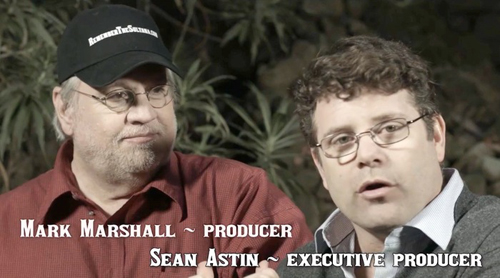
.
Executive Producer Sean Astin’s take on becoming part of SULTANA:
FC: What was Mark’s pitch to you about Sultana and why did you say yes?
SA: Mark called to invite me to narrate. I asked him if I could executive produce. 2 seconds into learning the story and knowing how careful Mark is with material, I knew I should be involved.
FC: Did you have reservations about using crowdfunding?
SA: I think crowd sourcing is incredible. I believe in artists. Mark’s passion project deserves any assistance it gets. I lept at the chance to share with what I learned on my campaign. Crowd sourcing allowed me to fund the 2nd Season of VoxPopuliRadio.com.
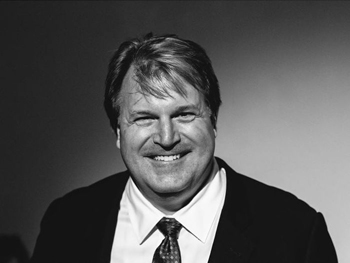
Jim Michaels
.
Executive Producer Jim Michaels‘ take on becoming part of SULTANA:
FC: What do you see as the advantages and disadvantages
of crowd funding?:
JM: This is really my first experience with raising money this way — I have been a contributor on other projects in the past though. Having been a studio based producer I have never been in a the position to need to raise funds before. It is en exciting process!
FC: Of your 20 plus producing credits – it appears that SULTANA is one of your first documentary film projects. What made you say yes (the people involved or the subject matter)?:
JM: I have had a long standing relationship with Mark Marshall and we have been looking for a project to work on together for many many years. I like the fact that this really is a part of American History that few have ever heard of. I am proud to give a voice to something that should have already been a part of every history book in America. There are so many of these types of untold, or not well documented, stories and they need to be told as factual as possible.
.
A native Oklahoman, Mark Marshall began his career in 1978 when he joined Lucasfilm Ltd., serving as production assistant on More American Graffiti, Star Wars Episode V: The Empire Strikes Back and Raiders of the Lost Ark, directed by Steven Spielberg. In 1984, he joined Amblin Entertainment as personal assistant to Mr. Spielberg. During that time, Marshall assisted on a varied slate of projects including Indiana Jones and the Temple of Doom, The Goonies, The Color Purple, Empire of the Sun, and Indiana Jones and the Last Crusade as well as Spielberg’s television series, Amazing Stories. In 1989, Marshall joined Donner Shuler-Donner Productions as a production representative to producer/director Richard Donner on HBO’s hit series, Tales from the Crypt. During hiatus on that series, Marshall joined producer Jennie Lew Tugend as her assistant on Radio Flyer and Lethal Weapon 3. In 1992, Tugend tapped Marshall as a Producer on the Free Willy trilogy for Warner Bros. Marshall also brought his considerable post-production experience to such films as Assassins, Lightning Jack, Star Kid, Message in a Bottle, Billy Crystal’s 61* for HBO, Harry Potter and the Sorcerer’s Stone and Mary-Kate & Ashley Olsen’s big-screen debut, New York Minute. He also served as production manager on the Academy Award-nominated short film, Kangaroo Court, directed by Sean Astin.
.



